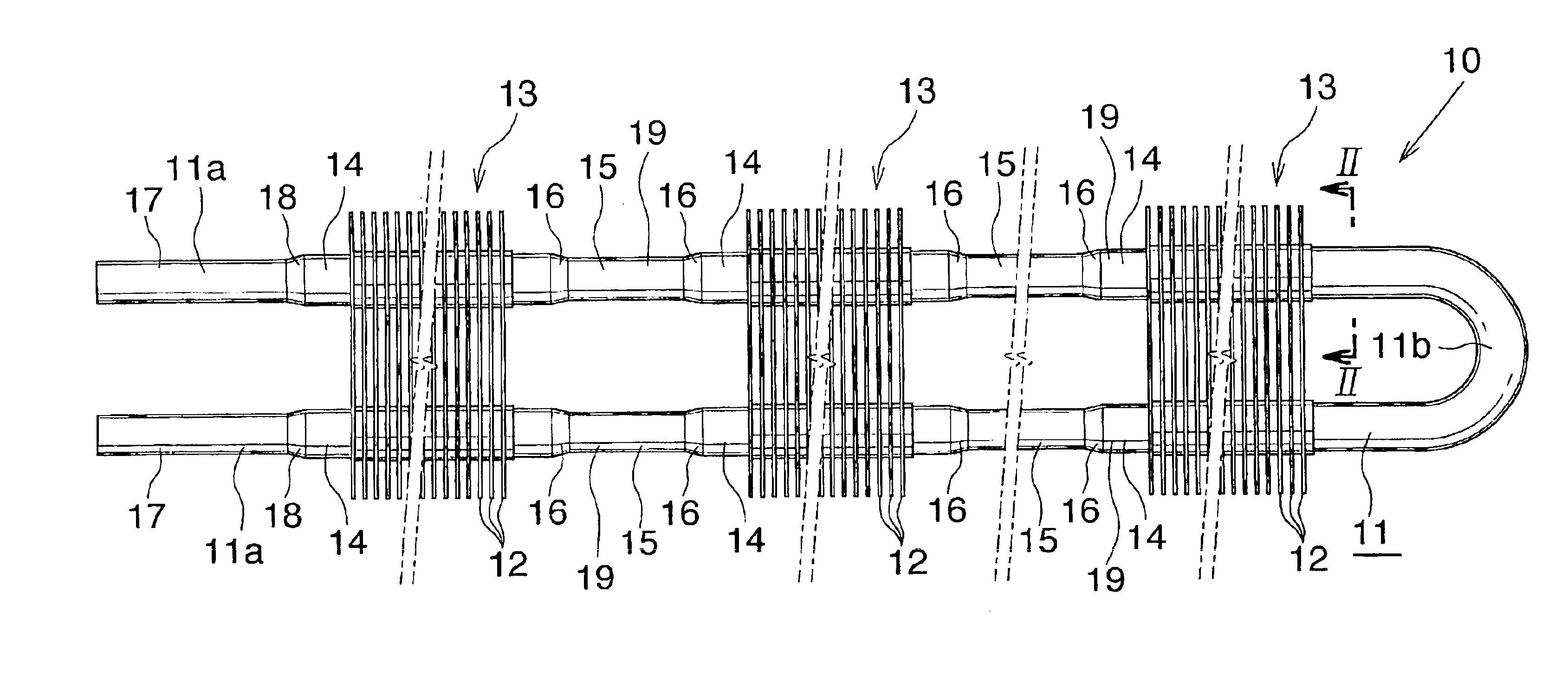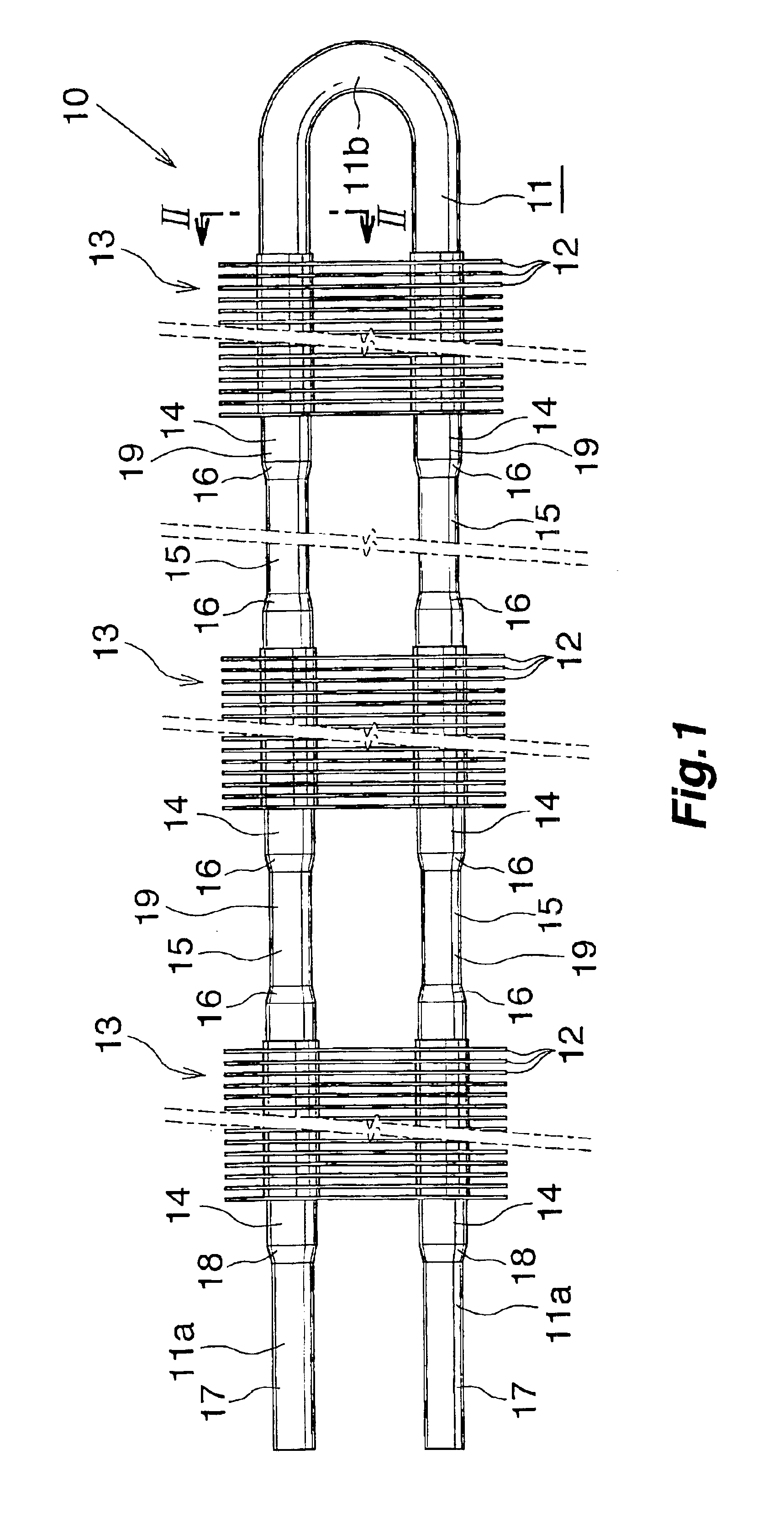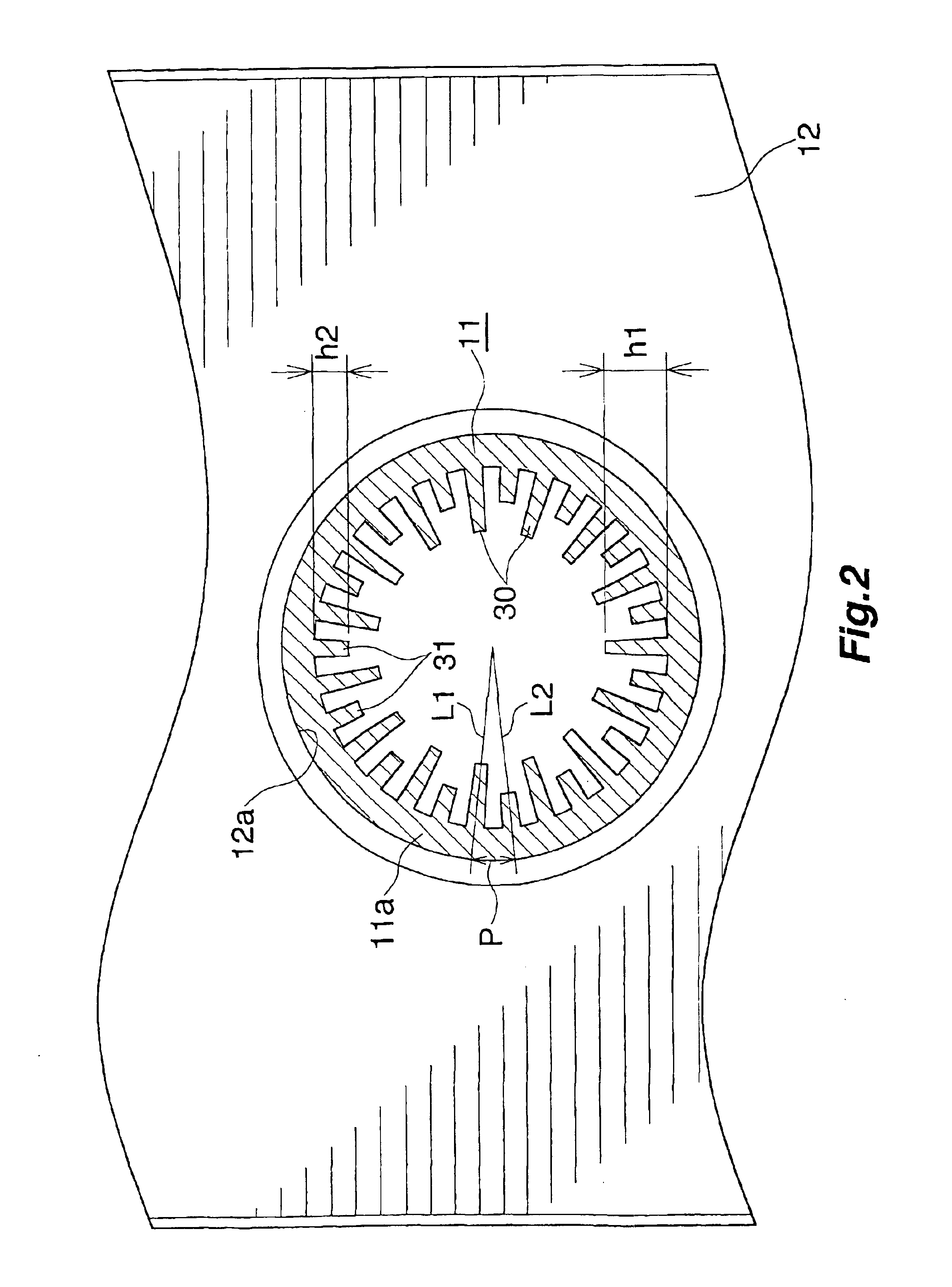Finned tube for heat exchangers, heat exchanger, process for producing heat exchanger finned tube, and process for fabricating heat exchanger
a technology of heat exchangers and fins, which is applied in the direction of indirect heat exchangers, lighting and heating apparatus, refrigeration components, etc., can solve the problems of heat exchangers fabricated by the first conventional process, need to diminish refrigerant leakage, and likely leakage of refrigerant from seam portions, so as to prevent the straight tube portion
- Summary
- Abstract
- Description
- Claims
- Application Information
AI Technical Summary
Benefits of technology
Problems solved by technology
Method used
Image
Examples
experimental example 1
[0087]Prepared were a heat exchanger 1 (invention device 1) comprising a hairpin tube 11 having the cross section shown inFIG. 2, and a heat exchanger 1 (invention device 2) comprising a hairpin tube 11 having the cross section shown in FIG. 7. The hairpin tube 11 of the heat exchanger 1 as the invention device 1 was 8 mm in outside diameter, 0.61 mm in circumferential wall thickness, 1.2 mm in the height h1 of projection of high inner fins 30, 0.65 mm in the height h2 of projection of low inner fins 31, and 30 in the combined number of two kinds of inner fins 30, 31. The hairpin tube 11 of the heat exchanger 1 as the invention device 2 was 8 mm in outside diameter, 0.61 mm in circumferential wall thickness, 1.2 mm in the height h3 of projection of inner fins 32, and 30 in the number of inner fins 32.
[0088]Also prepared was a heat exchanger (comparative device 1) having the same construction as the invention device 1 except that the hairpin tube 40 used had the cross section shown i...
experimental example 2
[0090]Evaporators comprising the invention devices 1, 2 and comparative device 1 were incorporated into refrigerators, which were installed in an atmosphere having a temperature of 25° C. and relative humidity of 70%. The refrigerators were then tested for power consumption by operating the compressor intermittently by on / off control with the door closed. As a result, the refrigerator incorporating the invention device 1 as its evaporator was found to be 2% lower in power consumption than the refrigerator incorporating the comparative device 1 as the evaporator. Similarly, the refrigerator incorporating the invention device 2 as its evaporator was 1.3% lower in power consumption than the refrigerator incorporating the comparative device I as the evaporator.
PUM
| Property | Measurement | Unit |
|---|---|---|
| Length | aaaaa | aaaaa |
| Thickness | aaaaa | aaaaa |
| Thickness | aaaaa | aaaaa |
Abstract
Description
Claims
Application Information
 Login to View More
Login to View More - R&D
- Intellectual Property
- Life Sciences
- Materials
- Tech Scout
- Unparalleled Data Quality
- Higher Quality Content
- 60% Fewer Hallucinations
Browse by: Latest US Patents, China's latest patents, Technical Efficacy Thesaurus, Application Domain, Technology Topic, Popular Technical Reports.
© 2025 PatSnap. All rights reserved.Legal|Privacy policy|Modern Slavery Act Transparency Statement|Sitemap|About US| Contact US: help@patsnap.com



